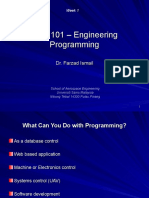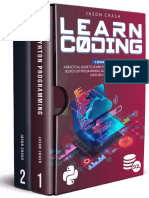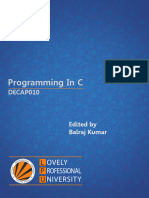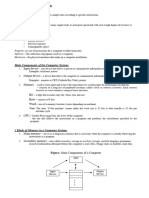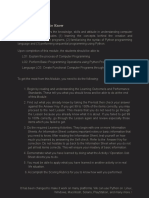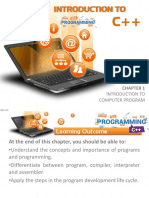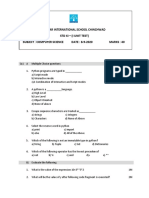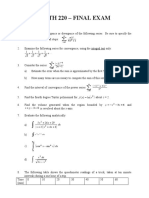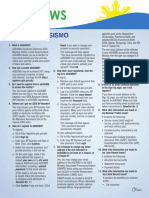0% found this document useful (0 votes)
32 views10 pagesIntroduction of
This document provides an introduction and overview of computer programming using Python. It discusses the goals of the course as introducing programming concepts and practices through substantial assignments using Python. It also defines key terms related to programming languages and provides examples of input and output operations in C language as well as discussing cursor movement and formulas used in Excel.
Uploaded by
devganalkapCopyright
© © All Rights Reserved
We take content rights seriously. If you suspect this is your content, claim it here.
Available Formats
Download as DOCX, PDF, TXT or read online on Scribd
0% found this document useful (0 votes)
32 views10 pagesIntroduction of
This document provides an introduction and overview of computer programming using Python. It discusses the goals of the course as introducing programming concepts and practices through substantial assignments using Python. It also defines key terms related to programming languages and provides examples of input and output operations in C language as well as discussing cursor movement and formulas used in Excel.
Uploaded by
devganalkapCopyright
© © All Rights Reserved
We take content rights seriously. If you suspect this is your content, claim it here.
Available Formats
Download as DOCX, PDF, TXT or read online on Scribd
/ 10




